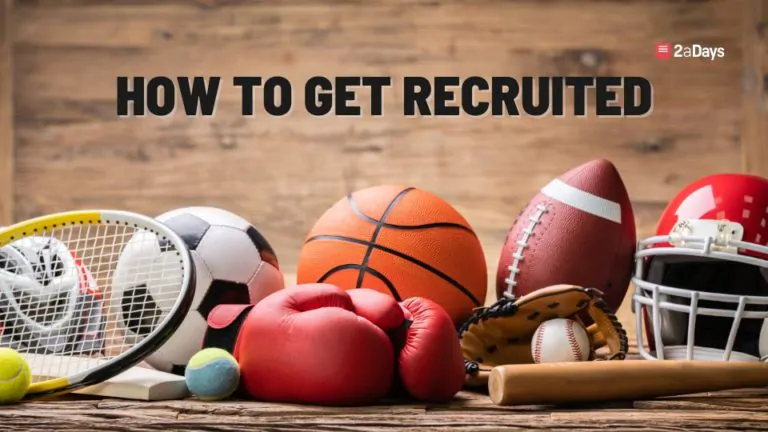Transferring schools as a college athlete can be an unfamiliar and confusing process. The rules may not always be clear, and depending on where you're coming from and where you're transferring to, your eligibility requirements may vary. Here is our guide to all things transferring as an athlete at any level in your college career.
Steps to Take Before Transferring:
- Research as many schools as possible to find the right fit. The new school that you are choosing should be right for you in both an athletic and academic aspect and allow you to reach the lifetime goals you have set for yourself.
- Look into the eligibility rules as a transfer to the school you are going to. Depending on if you are transferring to a Division I, II, or III school, the rules may differ, and different conferences may also have different rules regarding transfers.
- Reach out to the coaches and office of admissions at the school you are interested in attending. Make sure to fulfill all admission requirements as well as all prerequisites to join the team of your choice. In many cases, as an athlete, you will need to get permission from your current school and athletic department to speak to another school. [1]
What makes you a transfer athlete?
To legitimately be considered a “transfer athlete”, you must meet one of the following requirements (listed from most common to least common).
- Previously fully enrolled full-time for a regular term (fall or spring semester, or fall, winter, or spring quarter) and present at the school on the first day of classes for that enrolled term.
- Reported for a regular team practice prior to the start of classes.
- Participated in practice or competed in a competition even if you were not enrolled full-time at the University.
- Attended a class while enrolled through provisional admission, but then later denied full access.
- Attended and enrolled full-time at a night school of a specific institution where the rules and terms of this night school are the same as the day school and you are considered to be a full-time student.
- Received financial aid from the school to attend summer school before beginning fall classes. [2]
So you want to go DI?
Any Division I, II, or III or NAIA school to Division I:
When playing a varsity sport at school, there is a closed window of eligibility in which you can play at this level of competition. For Division I, an athlete has five full calendar years to complete four seasons of competition. This five-year period begins at the time of enrollment as a full-time student at any college. When transferring to a DI school from another DI school, you must be:
- In good academic and athletic standing (eligible) at your previous school.
- Receive a transfer-release agreement from your previous school.
- Are transferring in any sport that is not baseball, men's or women's basketball, football, or men's ice hockey. If you are transferring for any of these sports, you may only play immediately following the transfer if you were not recruited to your original four-year college or if you have never received any athletic scholarship from that previous school.
Depending on the expectations of the Division I school that you are transferring to, you may be ineligible for a year to get acclimated to the new environment and focus on academics. This academic year of residence is the “general transfer rule” but may be overridden by the school of which the athlete is transferring to or if certain transfer requirements are met.
The only exception to these rules is deemed by the school to which you are transferring to. This school determines whether or not you are eligible to play upon transfer, and has the ultimate authority to make the final decision as well as make exceptions.
Want to be a DII athlete?
Any Division I, II, or III or NAIA school to Division II:
For a Division II athlete, there is a ten-semester/15-quarter clock for which they are eligible to play. What this means is that as a full-time student-athlete, you have either ten semesters or 15 quarters to complete four full seasons of competition.
You are immediately able to be eligible to play if you transfer from any level to a Division II school with a few requirements. These requirements include:
- Being in good academic and athletic standing with the previous school, and being eligible at this school.
- Receiving a transfer-release agreement from the previous school.
Depending on the expectations of the Division II School that you are transferring to, you may be ineligible for a year to get acclimated to the new environment and focus on academics. This academic year of residence is the “general transfer rule” but may be overridden by the school of which the athlete is transferring to or if certain transfer requirements are met. [4]
What about transferring to DIII?
Any NCAA Division I, II, or III or NAIA school to Division III:
For a Division III athlete, practicing or competing after the first date of competition in their sport uses up one season.
You are immediately able to be eligible to play if you transfer from any level to a Division III school with a few requirements. These requirements include:
- Being in good academic and athletic standing with the previous school, and being eligible at this school.
- Receiving a transfer-release agreement from the previous school.
A Division III athlete may “self-release” meaning that they can give themselves permission to contact another Division II school about transferring.
Depending on the expectations of the Division III School that you are transferring to, you may be ineligible for a year to get acclimated to the new environment and focus on academics. This academic year of residence is the “general transfer rule” but may be overridden by the school of which the athlete is transferring to or if certain transfer requirements are met. [5]
Moving from Junior College or Community College to DI, DII, or DIII?
Junior College/Community College to Division I, II, or III:
To qualify to transfer from a two-year Junior or Community College, you must be certified by the NCAA Eligibility Center as a final academic qualifier. You may go through this eligibility process after starting at your two-year college but may not use test scores (SAT/ACT) or course work taken after enrolling in that two-year college program to become a qualified transfer athlete. You may not transfer from this institution if you are not certified by the NCAA Eligibility Center.
The general transfer rule applies to these Junior or Community College transfers. This means that generally these athletes must complete one full academic year of residence before being eligible to compete. This can be overridden by the school of which the athlete is transferring to or if certain transfer requirements are met. [6]
[1]http://www.ncaa.org/student-athletes/current/want-transfer
[2] http://www.athleticscholarships.net/ncaa-transfer-rules.htm
[3] http://www.ncaa.org/student-athletes/current/transfer-terms
[4] http://www.ncaa.org/student-athletes/current/transfer-terms
[5] http://www.ncaa.org/student-athletes/current/transfer-terms
[6] http://www.athleticscholarships.net/ncaa-transfer-rules.htm
* Originally published on May 23, 2016, by Keirsten Sires







